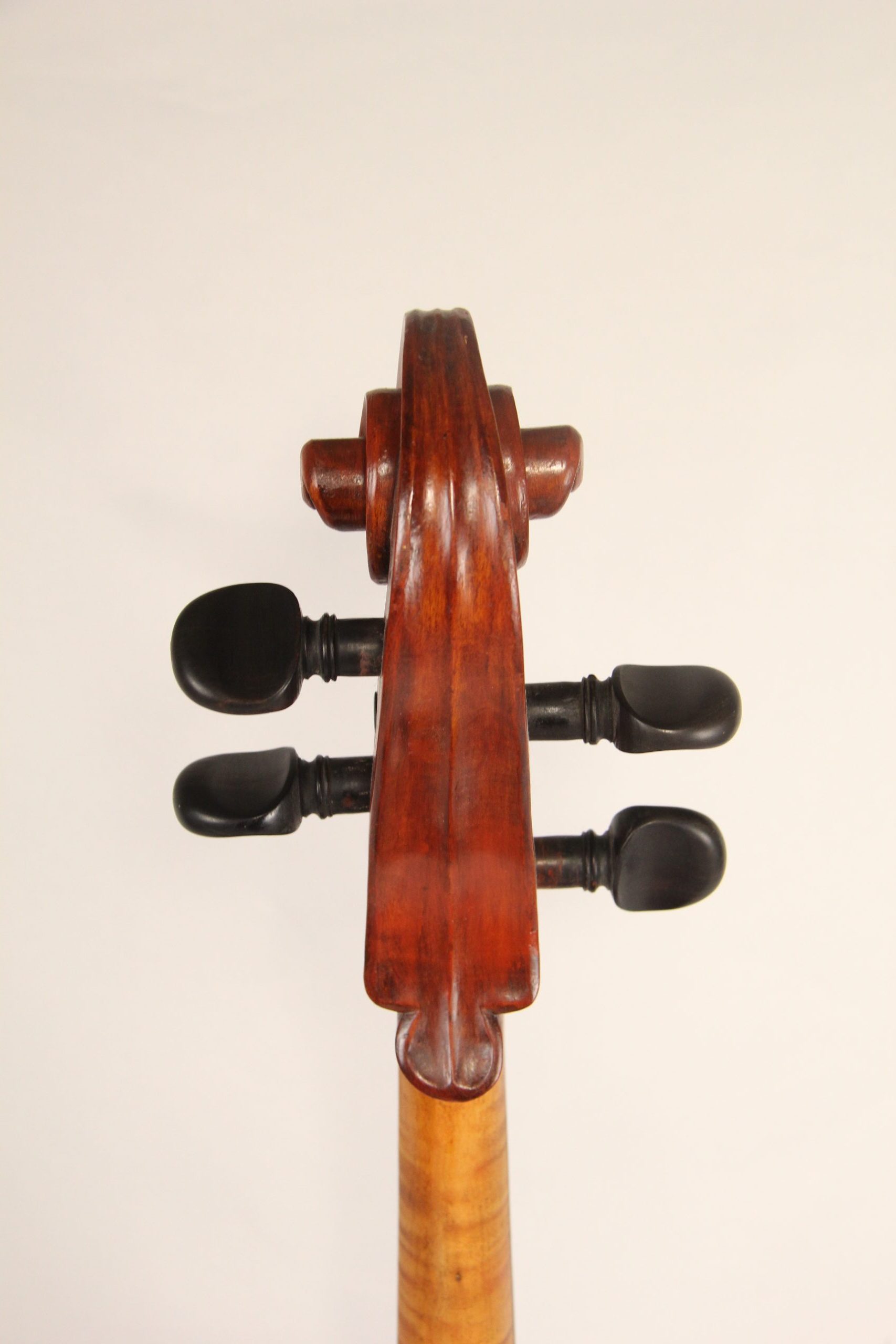William Green Cello
Details
- Origin: Medway, Massachusetts, U.S.A.
- Date: 1809
- Maker: William Green
- Collection: DUMIC 11
Description
Made of maple wood, with a medium-sized body and a short neck, and ebony components within. Metal strings run between the pegs of the fingerboard and the bridge. On the interior, the ribs are glued into a channel carved around the edge of the top and back plates.
Bass viols were originally created in America in the late 18th century, and lasted until the late 1840s before dying out. They were initially designed for being played in churches to assist with keeping Puritan singers in tune, and almost all of them were made in the New England area, such as this one, which was created in Medway, Massachusetts, where a number of bass viols can be traced back to. Bass viols were commonly used to refer to regular cellos as well as hastily-manufactured, church-specific instruments of lower quality and limited sound. William Green was a lesser-known stringed instrument maker at a time when violin maker expanded their expertise to make viols and, perhaps, cellos.
Sources
“Violoncello or ‘Yankee Church Bass.’” The Met. The Metropolitan Museum of Art. Accessed June 21, 2022. https://www.metmuseum.org/art/collection/search/504247.
Westberg, Megan. “Pilgrim’s Pride.” Strings Magazine, November 29, 2016. https://stringsmagazine.com/pilgrims-pride/.








